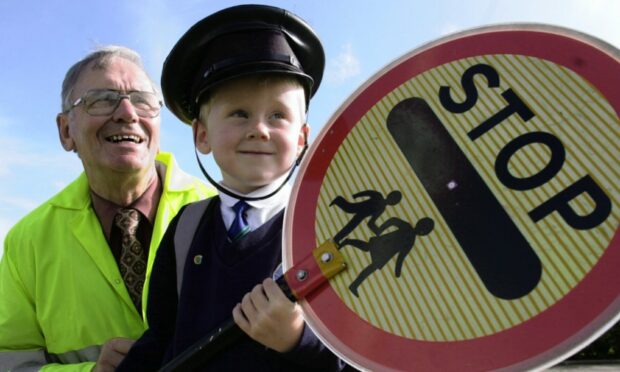Lollipop men and women are the unsung heroes of the road that play a vital role in keeping kids safe in the north and north-east.
A familiar and cheerful stalwart of the school day, crossing patrollers have always played an important role at the heart of our communities.
Crossing patrollers start at around 8.25am for half-an-hour, are back just before midday for the lunch break and then return in the afternoon for another hour’s work.
School crossing patrollers first appeared in the United States in the 1920s.
It’s a role that has a long history as the first lollipop lady was Mary Hunt, a school caretaker who began work to help pupils in Bath get to lessons in 1937.
They were then tried out in parts of London in the 1940s.
The outbreak of the Second World War put paid to a nationwide scheme so it wasn’t until the early 1950s when patrols were more widely adopted.
The idea was swiftly taken up by other local councils, freeing up the police officers who previously performed this duty.
The School Crossing Patrol Act (1953) would give patrollers the power to stop traffic officially – those drivers who refused faced a £5 fine.
When they were first introduced in Aberdeen there were around 50 patrollers.
Patrollers duties were not only to escort youngsters to their destinations safely, but also teach them the Green Cross Code to ‘stop, look and listen’.
The distinctive ‘lollipop’ sign was introduced in the 1960s and employees were mainly retired people with a work discipline they didn’t want to shake off.
Ventriloquist John Bouchier, who visited schools nationwide with his dummy Charlie to promote the scheme, was the first to coin the term ‘lollipop man’.
In 1974, distinctive yellow outfits replaced the white coats and black hats but the amount of traffic has grown hugely in the past five decades.
The monster roundabout at Mounthooly in Aberdeen was so big that it would need three crossing patrols to guide the children from nearby Causewayend School across it.
Lollipop man Leonard Still whose patrol covered Walker Road, Torry, spoke out in 1982 about the problems of “speeding traffic, badly-parked cars and torrents of abuse”.
”The whole thing is a mixture of the sublime and the ridiculous,” he said.
Youngsters at Balgownie Primary School were celebrating after a letter to their lollipop lady’s boss got her a brand new lollipop in 1992.
A P&J report later claimed patrollers were “dicing with death” and lollipop lady Pearl Rendall suffered bruised legs following a nasty accident in 1997.
She was thrown into the air by the impact after being struck by a car – watched by stunned youngsters from Springhill primary who she had been helping cross.
The kids from the school made her get well cards.
In 2000, a change in the law meant crossing patrols were no longer a legal requirement for schools, which led to a reduction in numbers nationally.
In Moray, the council took the decision in 2019 to axe school crossing patrollers as it sought to make about £10 million budget savings.
At the time, council bosses stressed the service was not statutory and it was the responsibility of parents to get their children to the gates.
Highland Council has also been cutting school crossing patroller services since its 2018 budget, but lollipop men and women remain on some routes.
Still keeping us safe almost seven decades on.
You might also like:
The tattie holidays meant toil for north-east pupils in the past
How the topic of trams has been dividing opinion in Aberdeen for 147 years








